Last updated on January 26th, 2022
Our site is reader supported, this means we may earn a small commission from Amazon and other affiliates when you buy through links on our site.
Crassula Ovata – Money Plant
It was once thought that having this beautiful and considered mystical ‘Money Plant’ in your home would bring you luck and fortune and this is probably where the Money Plant name derives from. It is also commonly known as the friendship tree, the lucky plant and the Jade Plant.
What was once a very popular houseplant is not quite as popular as it once was, but it is still an excellent plant to grow indoors. Although it loves plenty of light and will grow quite happily on a sunny windowsill, it will also grow well in a room with no windows (this is assuming it has got artificial light) and this often makes it perfect for having in a basement room. There are even a few slightly unusual varieties such as ‘Hummel’s Sunset’ that has green leaves, tinged with yellow and a variegated red edge. The new growth of these majestic plants is light green when young and they mature into thick trunk-type stems that give it the appearance of a bonsai tree.
- Pot Size: 12cm
- Plant Height Supplied (inc. pot): 15-25cm
- Please Note: When purchasing plants please consider that each live item is unique and may therefore differ from the images shown, which are for illustration purposes only.
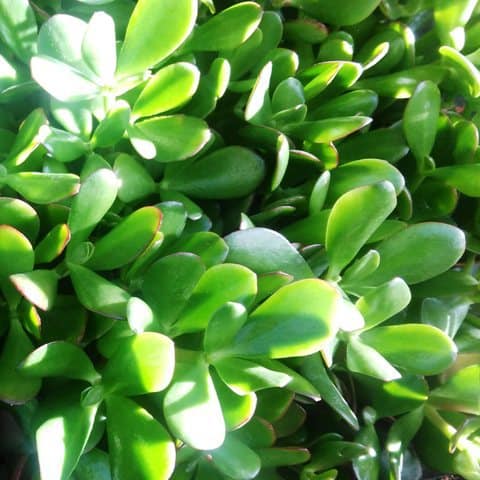
Plant Facts
- Originates from South Africa.
- Other names: Jade plant, Money plant.
- Grown as a houseplant in the UK or outdoors in warmer climates (not in the UK).
- Plants can reach 3ft (90cm) if grown in large pots but by keeping them in smaller pots will ensure they stay manageable and tabletop size.
- They make great plants for growing into an indoor bonsai tree.
- They can be toxic to cats and dogs so ensure they don’t show a liking to your plant or keep them out of reach.
Money Plant Care
As mentioned above, they prefer a sunny location with lots of light and they are very easy to grow. Water moderately in spring, summer and autumn when it is actively growing, allowing the soil to become dry between watering.
Crassula Ovata like most succulent plants have thick dark green, smooth, fleshy rounded leaves that sometimes become tinged with red. More mature specimens sometimes produce small star-shaped flowers in winter that are usually white or pink adding a little winter colour to the home.
Jade plants become very top-heavy as they grow so ensure you choose a heavy pot to grow the plant in to help prevent any accidents with tumbling plants. They prefer heavy, well-drained soil that is 50% grit and mixed with loam. Cactus compost is usually ideal for them and perfect for those who don’t want to make their own compost mix.
- Keep the plant at room temperature and this is ideally between 60°f (15.5°c) to 75°f (24°c).
- They seem to grow best when root bound (compact roots in the pot). After a while they will need repotting though so use a slightly larger pot and use a heavy gritty soil, such as cactus compost.
How to help encourage flowering
In autumn bring the plant into a warm area that will provide it with only a few hours of daylight. Stop feeding and reduce watering, only applying water when the soil becomes very dry. Many people have used this method, have seen results and successfully got their plant to flower in winter.
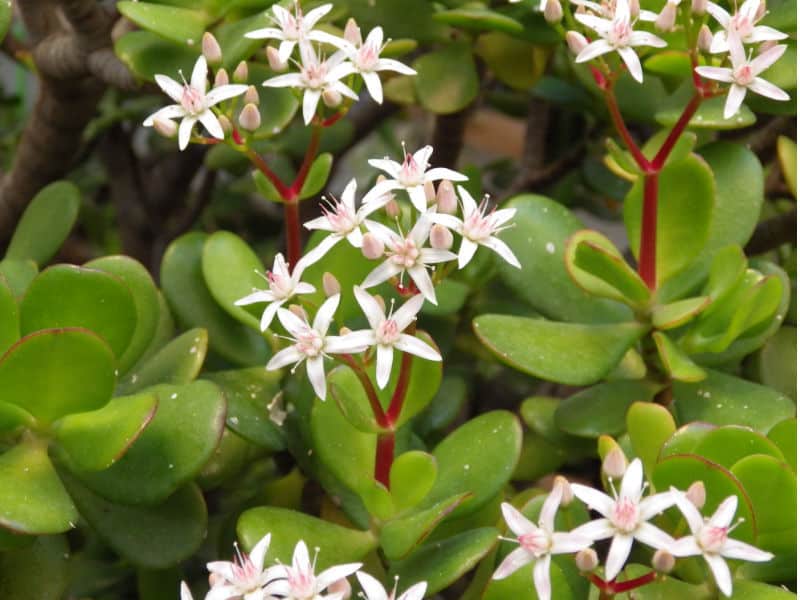
Feeding
They are known for being able to survive with very little care, including lack of feeding and watering and this is one of the main reasons that makes them very easy to grow, even for people who are not particularly green-fingered. That being said, they will benefit from feeding with a balanced feed (any general houseplant feed) every three to four weeks. Liquid feeds that you mix in a small watering can are fine to use.
Below are two recommended feeds
- Houseplant Focus is a premium quality, balanced liquid concentrated fertiliser
- Complete feeding programme
- Manufactured to the highest standards from pure minerals salts and rich organic nutrients
- Suitable for all house plants
- Ideal for anthuriums, ferns, dracaenas, ficus, palms, poinsettias, as well as cacti, succulents and bromeliads.
- AUTOMATIC: Give yourself piece of mind that your houseplant is getting a regular dose of the nutrients it needs with the Baby Bio Houseplant Food Drip Feeder
- LEAVING WITHOUT WORRY: Offers convenient, worry-free care of your houseplant
- EASY TO USE: Each drip feeder lasts for up to 1 month, and is easy to use. Simply cut the tip off and place it tip down in the soil
- SEASONAL: Use during the growing season for healthy and vibrant blooms that make your houseplant look it's best
- INDOOR USE: For use with houseplants in your home or conservatory for best results
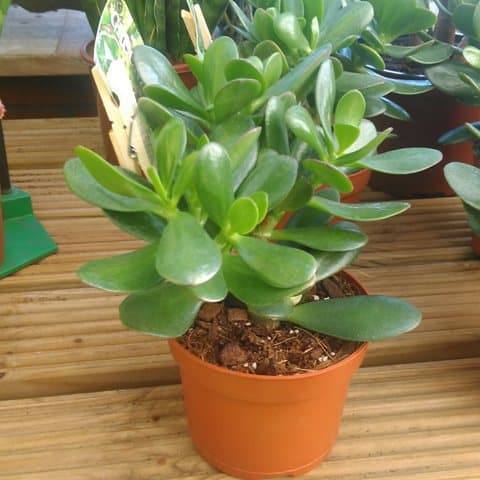
Money Plant Cuttings
Taking cuttings from Jade plants is very easy. You can have many of these wonderful plants in your home in no time. There are two ways in which you can take a cutting. The first is by taking plant branch cuttings and this is where you take a section of the stem. The second way, which is just as easy, is to take a leaf cutting from a single leaf. This usually takes slightly longer to produce a small but bushy plant.
How to take a plant branch cutting
Cuttings can be taken from spring and throughout the summer for best results. Take a clean cutting from the plant that is around 3 to 4 inches long. Unlike most cuttings that need to be planted straight away, you need to leave the cuttings for a few days for the clean-cut to callous and turn hard. To do this simply leave the cutting on the side by a window until the end you have cut becomes hard.
Next mix 50% vermiculite or perlite with 50% soil, make a small hole and insert the cutting. Water well and keep the soil moist until they start to root, usually in around 2 weeks to 2 months. Once rooted, allow the soil to dry before watering. Sometimes simply inserting the cutting into the soil is enough to make them root!
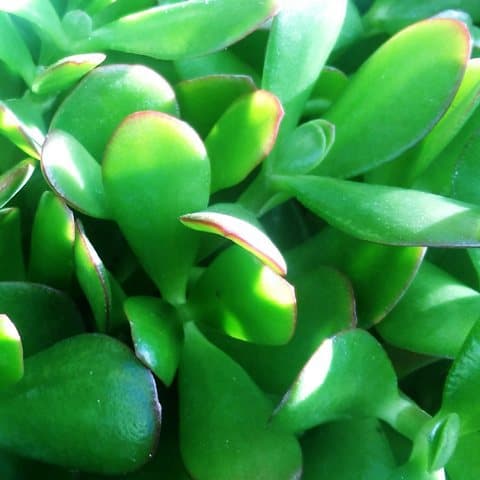
How to take a leaf cutting
Leaf cuttings from Jade plants are taken in the same way as plant branch cuttings (as described above) but you use a single leaf instead. Simply cut a leaf off or use a freshly dropped leaf from your plant and allow the wound to become hard. Insert the leaf half into the soil, wound side down and water well, keeping the soil moist. After a while, you will start to notice tiny plantlets (baby leaves) forming around the bottom of the leaf cutting. As these mature, they will form the new Crassula Ovata plant.
Money Plant Problems
They are usually disease-free but can be attacked by bugs as with most houseplants. Watch out for mealybugs, vine weevils and aphids and treat at the first signs of an attack.
- FAST ACTING: A contact bug killer that kills most common plant pests
- PROTECTS: Pest-free for up to 2 weeks, offering you piece of mind that your plant is safe from further attack
- CONVENIENT: ready to use spray with twist and lock function for quick application
- WIDE RANGE: Can be used to protect many ornamentals and more than 50 different crops
- Use only outdoors or in a well ventilated area
Last update on 2024-04-20 / Affiliate links / Images from Amazon Product Advertising API





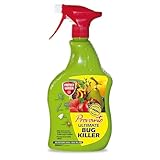
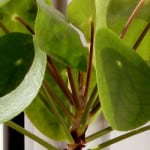
4 Comments
Hi, my jade plant is looking a bit sad. Some of the leaves are turning yellow and dropping. What would you suggest is the problem and the treatment.
Many thanks
Helen
helenfoggarty@yahoo.com
Please help I have a jade stroke money plant that is nearly 6 ft tall now and can no longer move it around it has been outside for many Summers and this winter I have to leave it outside as can no longer get it in how can I protect it I really don’t want to lose this plant as I love it
Hi Denise, ideally it should be brought indoors in winter. However if you really cannot bring it indoors then the best thing you can probably do is cover with a good thick fleece jacket like this one and put it in the most sheltered spot in your garden, it would also be a good idea to wrap the pot in some sort of lagging / fleece to help protect the roots from frost. Even by doing this is may not survive but would have the best chance. Hope this helps.
Hi Helen, there are many reasons the leaves would start turning yellow, if the leaves are plump but yellow try reducing the amount and frequency of water. However, if the leaves are wrinkled, leathery leaves that are not shiny it could be lack of water as they will drop the leaves to.
Overfeeding is also sometimes a problem if you don’t use a special succulent fertiliser and use standard houseplant fertilizer use at one-quarter strength once a month. Overfeeding burns the roots and causes yellowing and leaf drop.
Finally, plants that are not pruned will shed old leaves every year before their dormant winter phase. These leaves, generally large, older ones at the base of the stems, will first turn yellow and then drop off. This is a natural process and not a sign that there is a problem with your plant.
Hope this helps